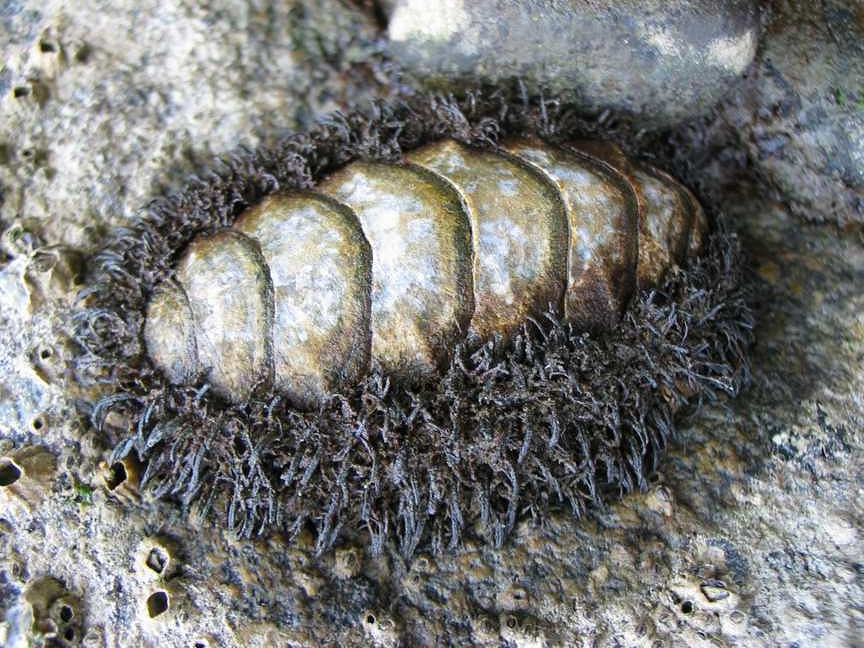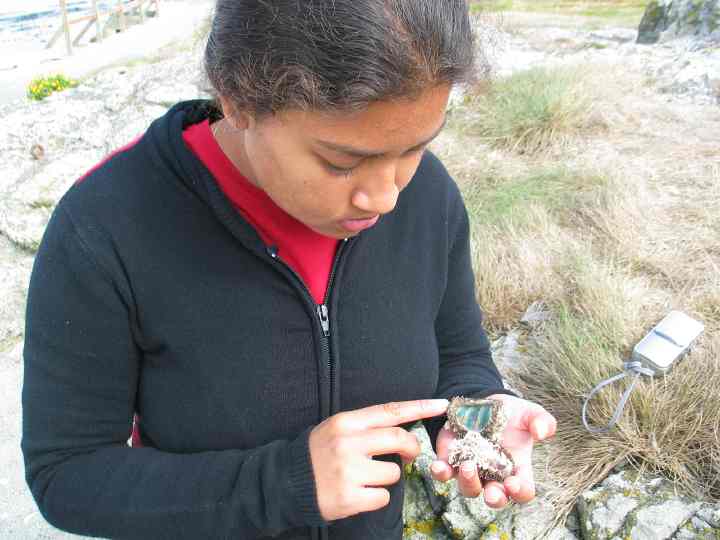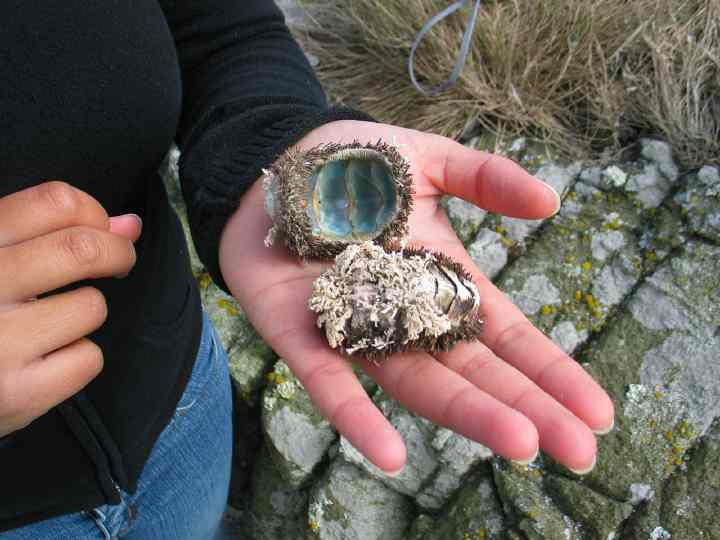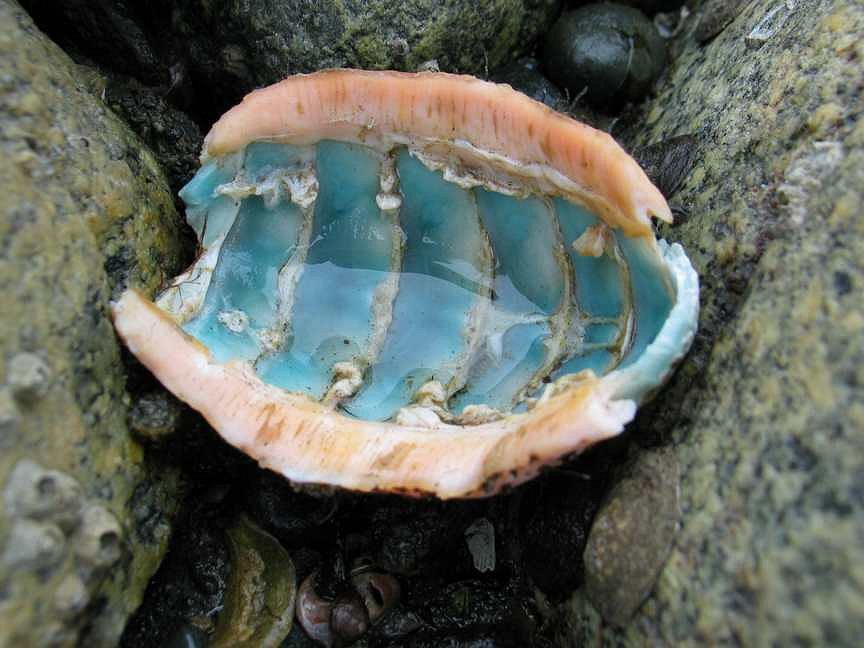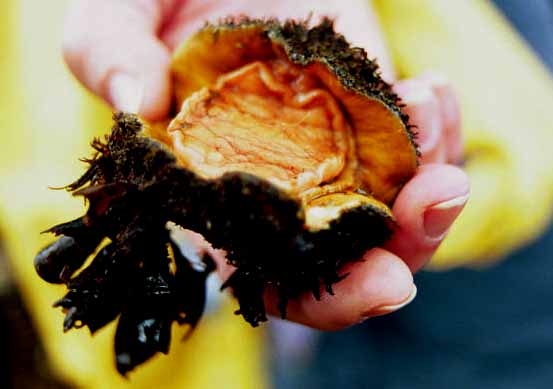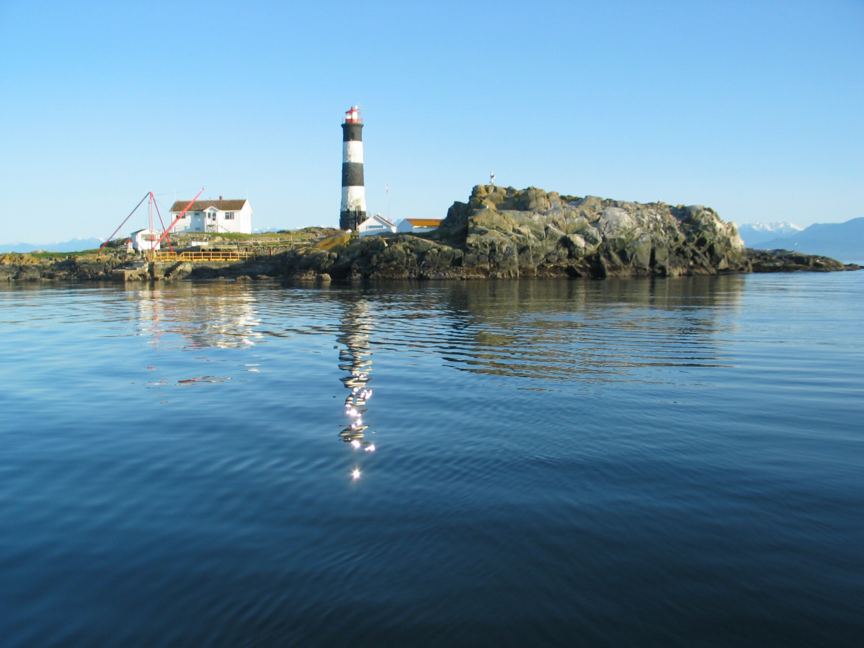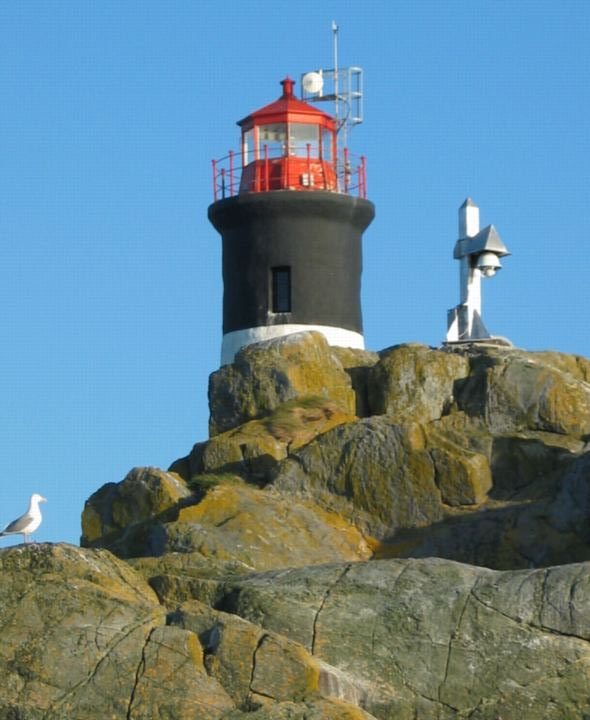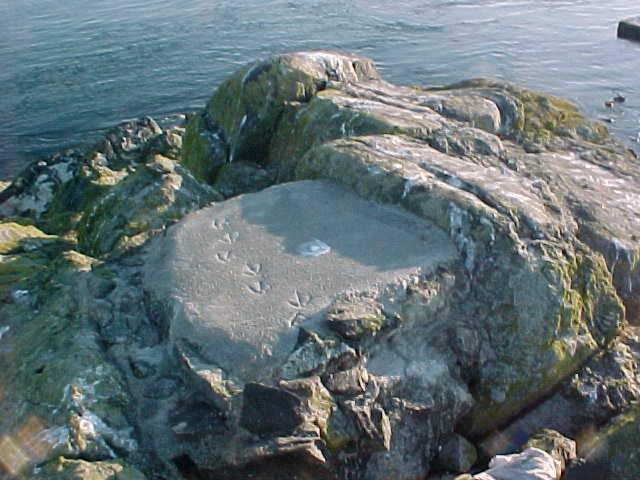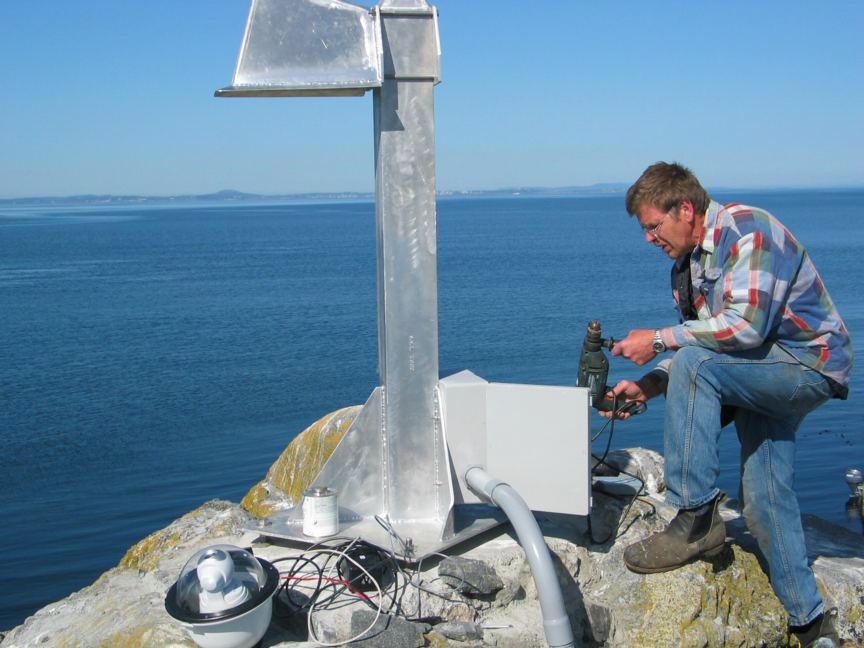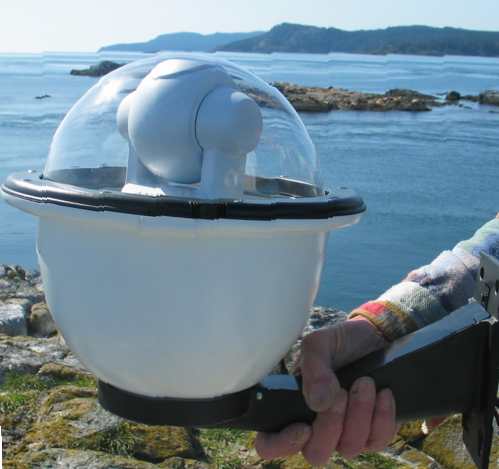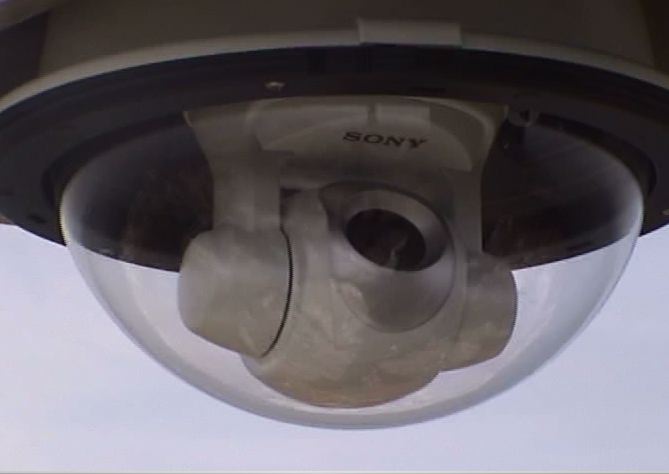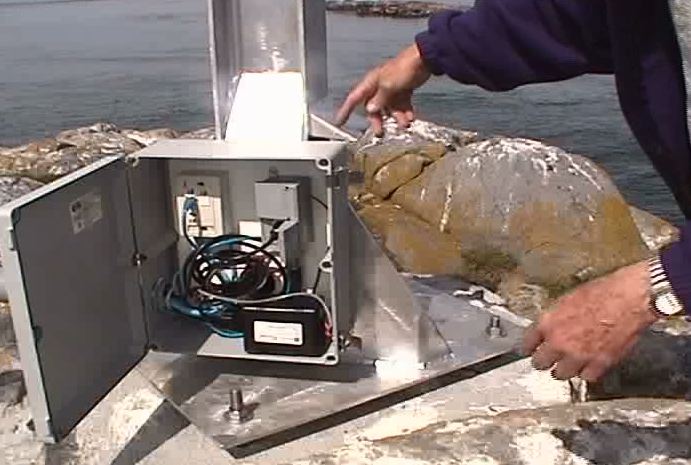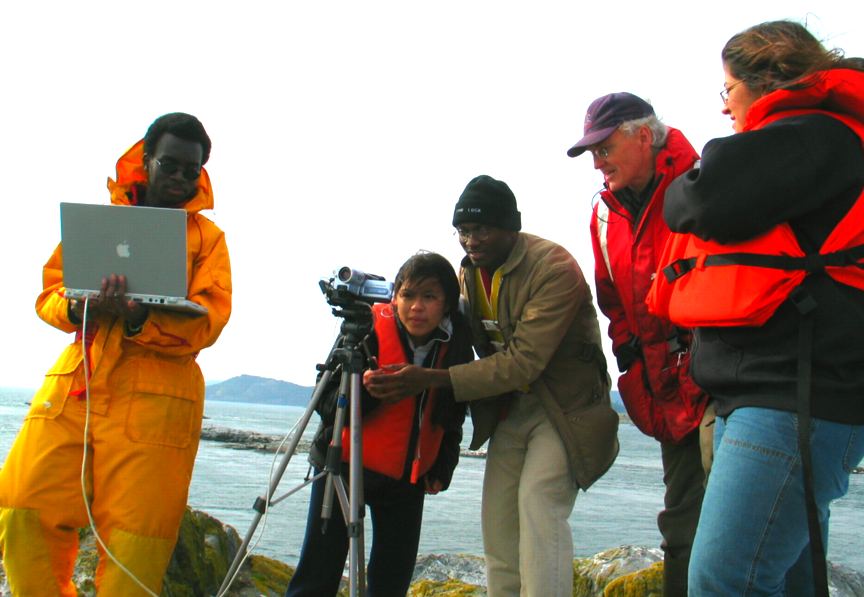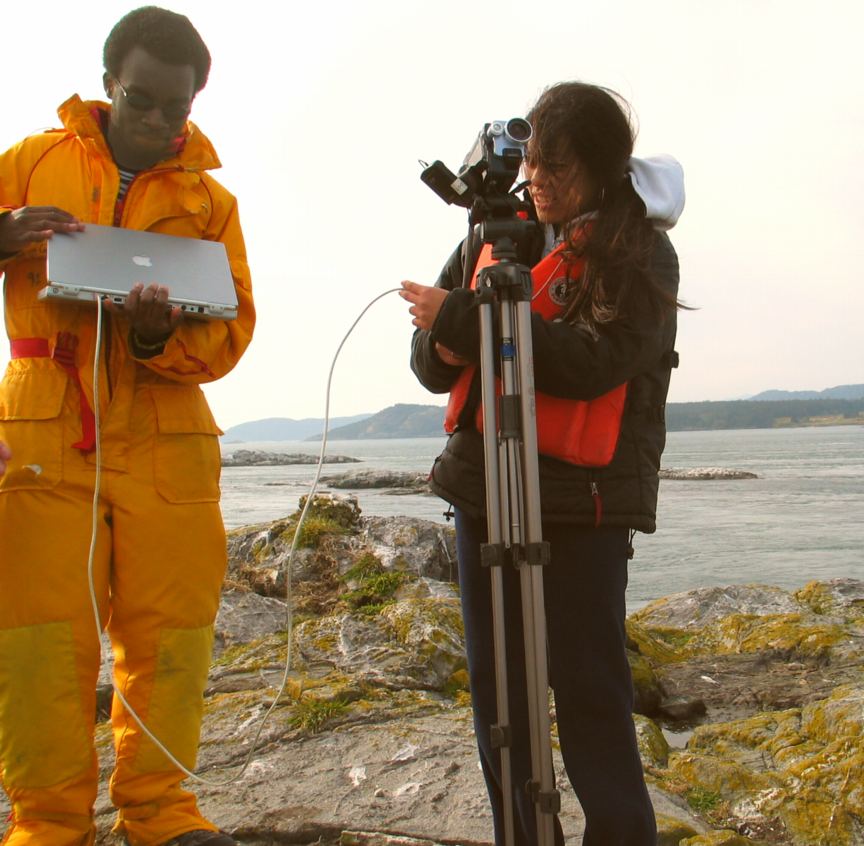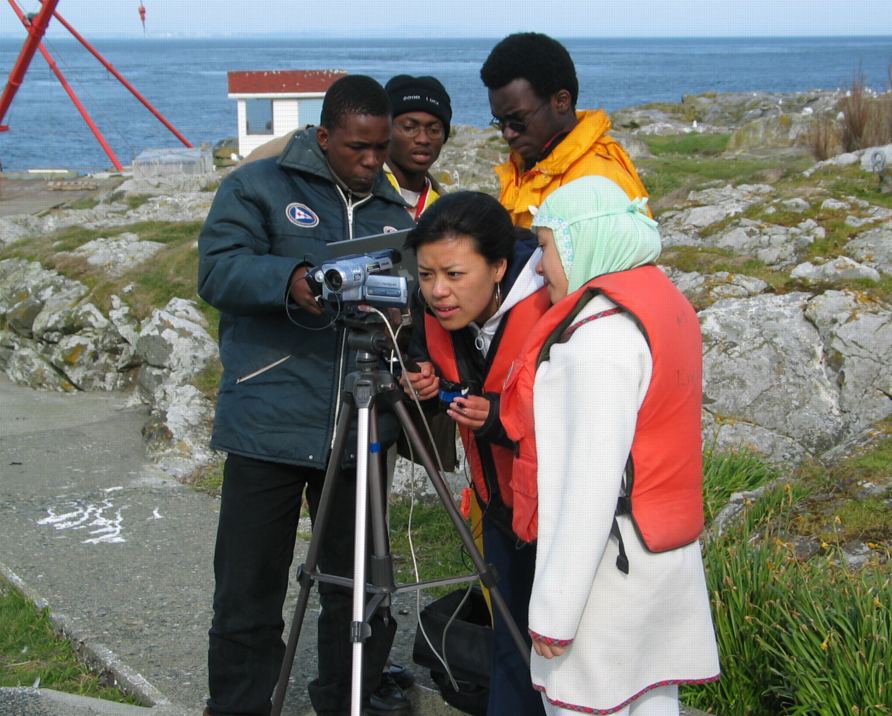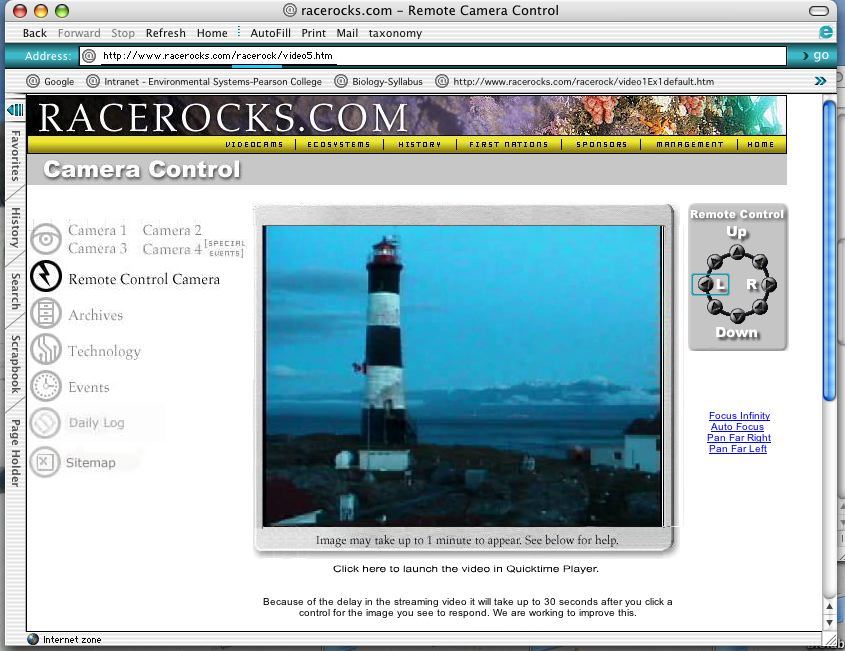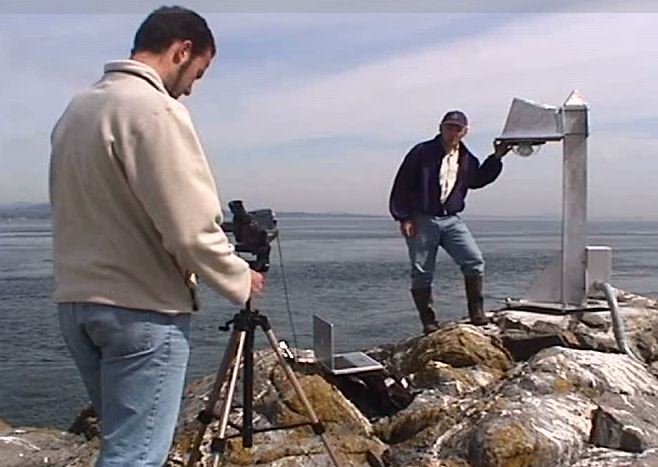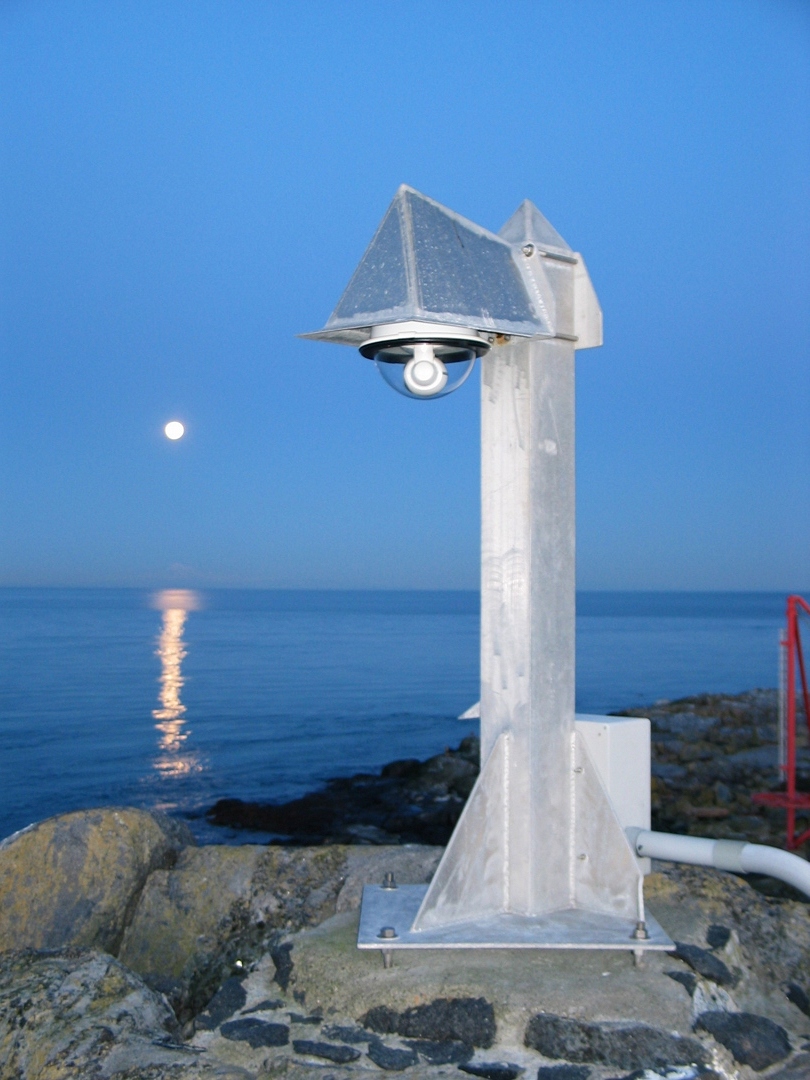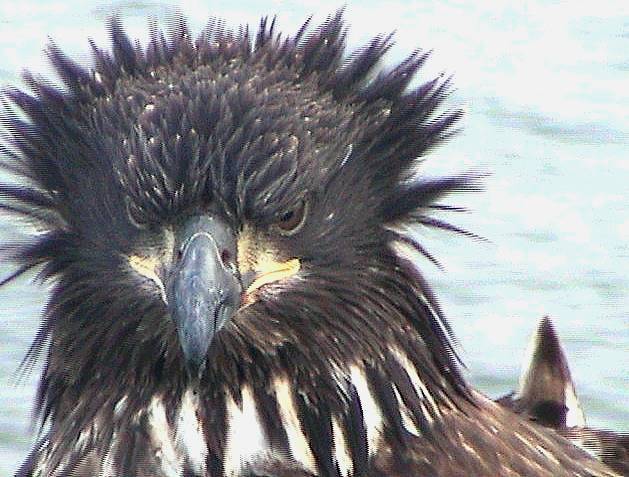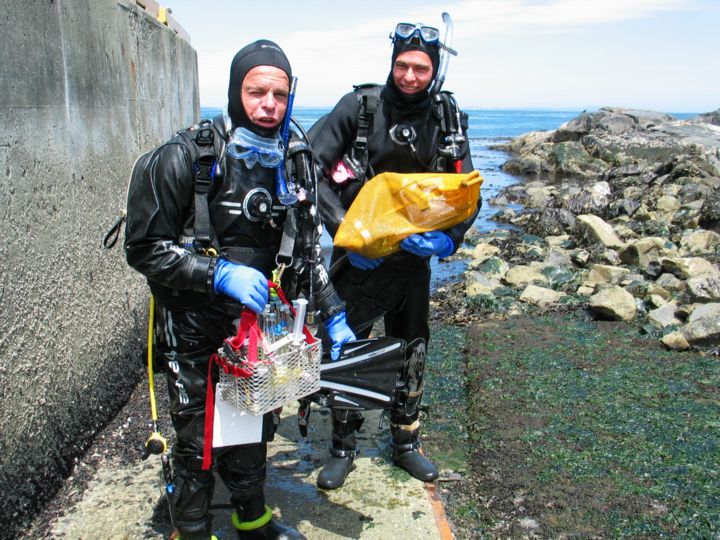 In March, 2004, Dr.GitaiYahel, a Post Doctorate researcher from the Biology Department at the University of Victoria, joined us for two dives at Race Rocks to check out the possibility of doing research there. He is interested in suspension feeders’ nutritional ecology and the role of dissolved substance as a food source for marine organisms. Currently he is trying to establish a field survey of the dissolved and picoplanktonic diet composition of active suspension feeders such as sponge, mussels and tunicates. (15 minute video – also good underwater images of sponges)
In March, 2004, Dr.GitaiYahel, a Post Doctorate researcher from the Biology Department at the University of Victoria, joined us for two dives at Race Rocks to check out the possibility of doing research there. He is interested in suspension feeders’ nutritional ecology and the role of dissolved substance as a food source for marine organisms. Currently he is trying to establish a field survey of the dissolved and picoplanktonic diet composition of active suspension feeders such as sponge, mussels and tunicates. (15 minute video – also good underwater images of sponges)
See the project description below on SUSPENSION FEEDER RESEARCH for details of the study.
Sponges, bivalves and tunicates play an important role in the trophic dynamics of many benthic communities. However, direct in situ measurements of their diet composition, filtration and excretion rates are lacking. Our knowledge of these rates is based mostly on indirect, in vitro measurements. Recently we have developed an in situ, non-intrusive technique to directly measure the rate and efficiency by which an active suspension feeder removes (or discharges) substances from (to) the water it filters. The technique, termed “InEx”, is based on the simultaneous, pair-wise collection of the water Inhaled and Exhaled by the animal. The difference in the concentrations of a substance among a pair of samples provides a measure of the retention (or excretion) of the substance by the animal. Calculations of feeding (or excretion) rates are obtained by multiplying the concentration difference by pumping rate. The latter is concurrently measured by recording the movement of a dye front in a transparent tube positioned within the ex-current jet. An important quality of the InEx technique is the lack of any manipulation of the studied organisms thus allowing realistic estimates of the organism’s performance under natural conditions. Former work in tropical water had revealed novel aspects of suspension feeders’ nutritional ecology including the major role dissolved organic substances play in the diet of some reef sponges (Yahel et al. 2003, Limnology and Oceanography, 48, 141).
For the proposed work at Race Rocks we can foresee two phases:
I. Identifying target suspension feeding taxa
We will execute a field survey of common suspension feeders at Race Rocks. Targets groups include bivalves, ascidians, and sponges. SCUBA divers will sample the water inhaled and exhaled by the surveyed organisms to compare concentration changes of CDOM, DOC, bacteria, phytoplankton, other organic particles, plant nutrients, silica, and sediment grains. Sampling methods will include an Inherent Optical Properties sensor (IOP, providing both CDOM spectra, concentration and optical characterization of the particulate field), Laser In Situ Scattering instrument (LISST, providing measurements of particles concentration and size distribution), and discrete water samples (InEx). The discrete water samples will be analyzed using a high temperature total carbon analyzer, flow injection nutrient analyzer, and a flow cytometer. This sampling scheme will provide ‘snapshot’ information on the performance of individual organisms.
II. Continuous monitoring of individual ‘model’ organisms.
Longer term (hours to days) monitoring of organisms will provide a record of feeding and metabolic performance with respect to environmental parameters (e.g., current, light, ambient particles concentration, etc.). Our knowledge of such processes in the field is limited. Nevertheless, the few existing studies suggest that suspension feeder activity may undergo considerable diel shifts. Moreover, environmental variables such as food and sediment concentration are known to affect suspension feeder filtration rates. Multi-day instrumentation of individual suspension feeders will provide a continuous record of the material fluxes mediated by the animals. Two 16 MHz ADVs’ (Acoustical Doppler Velocimeters) will provide high frequency (~2 Hz) current and acoustical backscatter data. One ADV will sample the exhalant jet of the study animal while the other will sample the inhalant (ambient) water. Similarly, paired measurements of optical water properties will be obtained by slowly pumping small amounts waters through a 4 sensor array mounted on a nearby frame. The instrument array will include: LISST-100, IOP sensors (WetLabs ac-9, and Eco-VSF,) CTD, and a Seabird oxygen sensor. The latter will allow us to estimate respiration rate and to correlate it to measured material fluxes mediated by the studied organisms. An online video camera equipped with an infra-red light source will be used to monitor the immediate vicinity of the exhalant aperture to allow better interpretation of behavior related signals (e.g. the presence of predators or sediment resuspension events).
Target organisms will be carefully selected based on the results of the survey in phase I. A priori, plausible candidates for these experiments are sponges and large bivalves (e.g. Mytilus californicus). These animals possess a large ex-current aperture that allows easy instrumentation and previous studies suggest that they may be capable of removing large quantities of DOC from the water.
Note that the proposed work in absolutely non destructive and the studied animals will not be manipulated by any means.
 The Race Rocks taxonomy is a collaborative venture originally started with the Biology and Environmental Systems students of Lester Pearson College UWC. It now also has contributions added by Faculty, Staff, Volunteers and Observers on the remote control webcams. Original by Raisa Mirza, 2004
The Race Rocks taxonomy is a collaborative venture originally started with the Biology and Environmental Systems students of Lester Pearson College UWC. It now also has contributions added by Faculty, Staff, Volunteers and Observers on the remote control webcams. Original by Raisa Mirza, 2004

